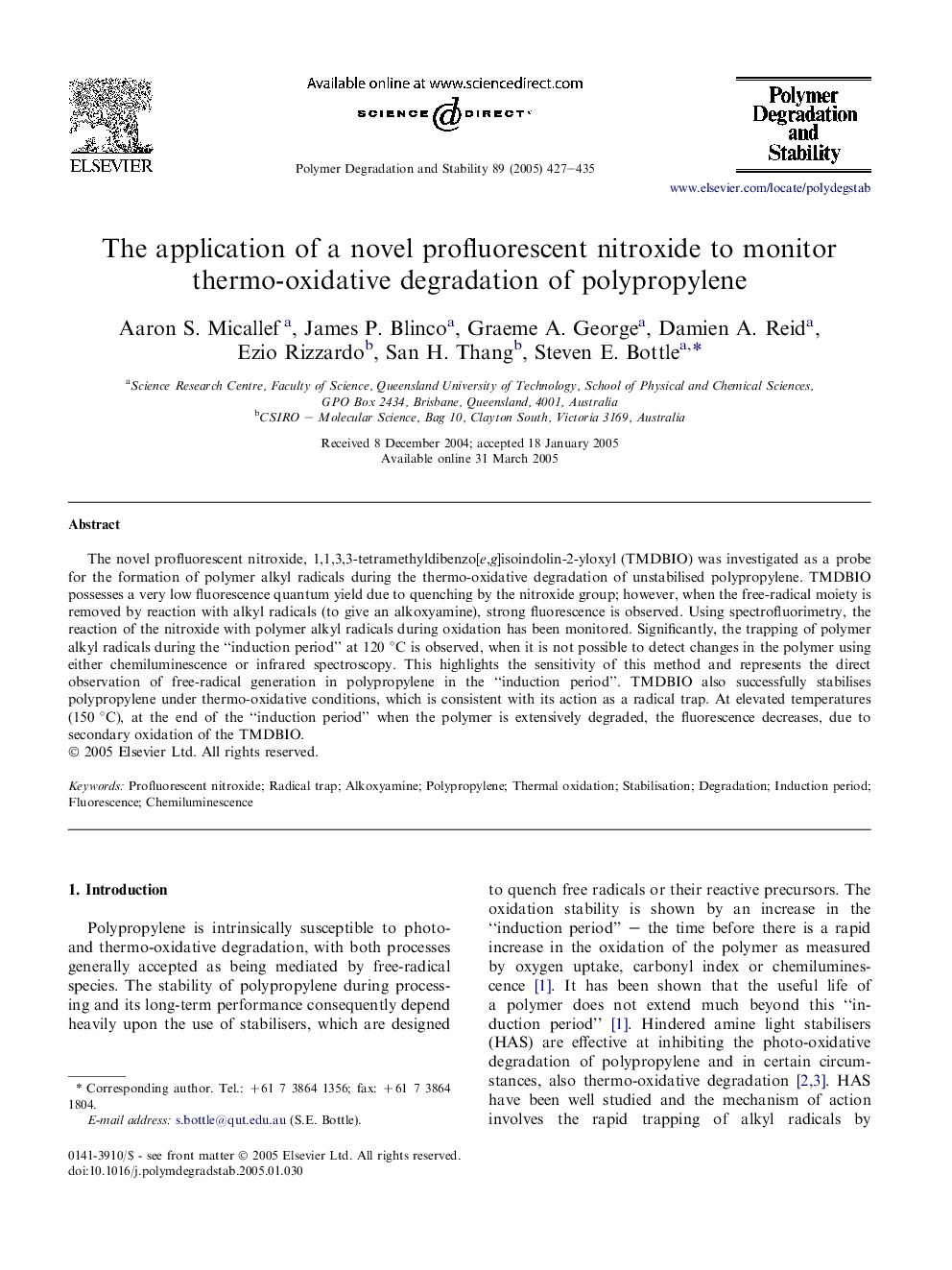| Article ID | Journal | Published Year | Pages | File Type |
|---|---|---|---|---|
| 9560720 | Polymer Degradation and Stability | 2005 | 9 Pages |
Abstract
The novel profluorescent nitroxide, 1,1,3,3-tetramethyldibenzo[e,g]isoindolin-2-yloxyl (TMDBIO) was investigated as a probe for the formation of polymer alkyl radicals during the thermo-oxidative degradation of unstabilised polypropylene. TMDBIO possesses a very low fluorescence quantum yield due to quenching by the nitroxide group; however, when the free-radical moiety is removed by reaction with alkyl radicals (to give an alkoxyamine), strong fluorescence is observed. Using spectrofluorimetry, the reaction of the nitroxide with polymer alkyl radicals during oxidation has been monitored. Significantly, the trapping of polymer alkyl radicals during the “induction period” at 120 °C is observed, when it is not possible to detect changes in the polymer using either chemiluminescence or infrared spectroscopy. This highlights the sensitivity of this method and represents the direct observation of free-radical generation in polypropylene in the “induction period”. TMDBIO also successfully stabilises polypropylene under thermo-oxidative conditions, which is consistent with its action as a radical trap. At elevated temperatures (150 °C), at the end of the “induction period” when the polymer is extensively degraded, the fluorescence decreases, due to secondary oxidation of the TMDBIO.
Keywords
Related Topics
Physical Sciences and Engineering
Chemistry
Organic Chemistry
Authors
Aaron S. Micallef, James P. Blinco, Graeme A. George, Damien A. Reid, Ezio Rizzardo, San H. Thang, Steven E. Bottle,
